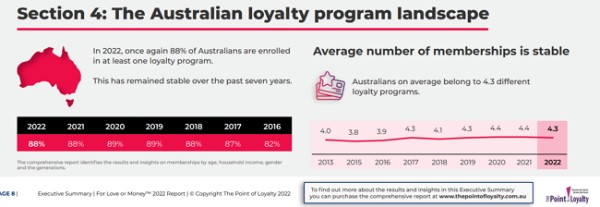Loyalty programs are on the rise in Australia. Most major retailers now offer a loyalty program, which most Australian consumers use. Most of our clients have some loyalty marketing.

However, loyalty programs are only a solution for some retailers. Besides requiring careful planning and investment, they may not make good business sense for some retail situations. Here we'll outline a few key reasons why in my experience people do not use them:
Financial
As a rule, loyalty programs give about 1% more sales. If a shop has a $500,000 turnover with a margin of 30%, then we are looking at a gross profit of 1% x $500,000 x 30% = $1,500. This may not justify the work of running such a program; even though the software is free with our POS Software, it still requires work to run it.
Low-Frequency Purchases
Loyalty programs work best when customers make frequent repeat purchases. For example, grocery stores, newsagencies and coffee shops see regular business. Frequent interactions give customers opportunities to earn and redeem rewards.
But retailers like bedding shops only see customers occasionally. A typical consumer will buy maybe every ten years. With limited opportunities to earn rewards, loyalty programs are less enticing. These retailers may be better off using **referrals**, **reviews** and **social media** to maintain relationships between big purchases.
Tight Margins
Some retailers operate on very slim profit margins. For example, lotto shops can average a few percent profits on sales. For them, the discounts and rewards required to run a loyalty program would wipe out margins entirely.
> "We calculated the cost of rewards would eliminate our whole profit margin. Loyalty programs don't work with our tight margins and high costs." - a Lotto shop owner told me.
I have spoken a lot about it here under the heading price cannibalization.
Small Customer Base
Loyalty programs require upfront and ongoing costs. To benefit, retailers need at least 150+ active members in their program. Without enough customers, costs outweigh rewards. For example, say you get a 1% response rate, which is pretty standard nowadays in advertising. If you send out 150 newsletters that took you an hour to write, that is now 1 or 2 extra sales. Was your time worth it?
Lack of Interest
Some retailers are passionate about their niche, not just profit maximization. Loyalty marketing will backfire if the owner, even if interested, lacks the skill. Unless there's someone else enthusiastic to run it, retailers may be better off focusing on the in-store experience rather than loyalty programs.
Conclusion
The bottom line is loyalty programs are only sometimes applicable to Australian retail. Carefully evaluating your situation first.
What are your experiences with retail loyalty programs? Let me know your thoughts below!


